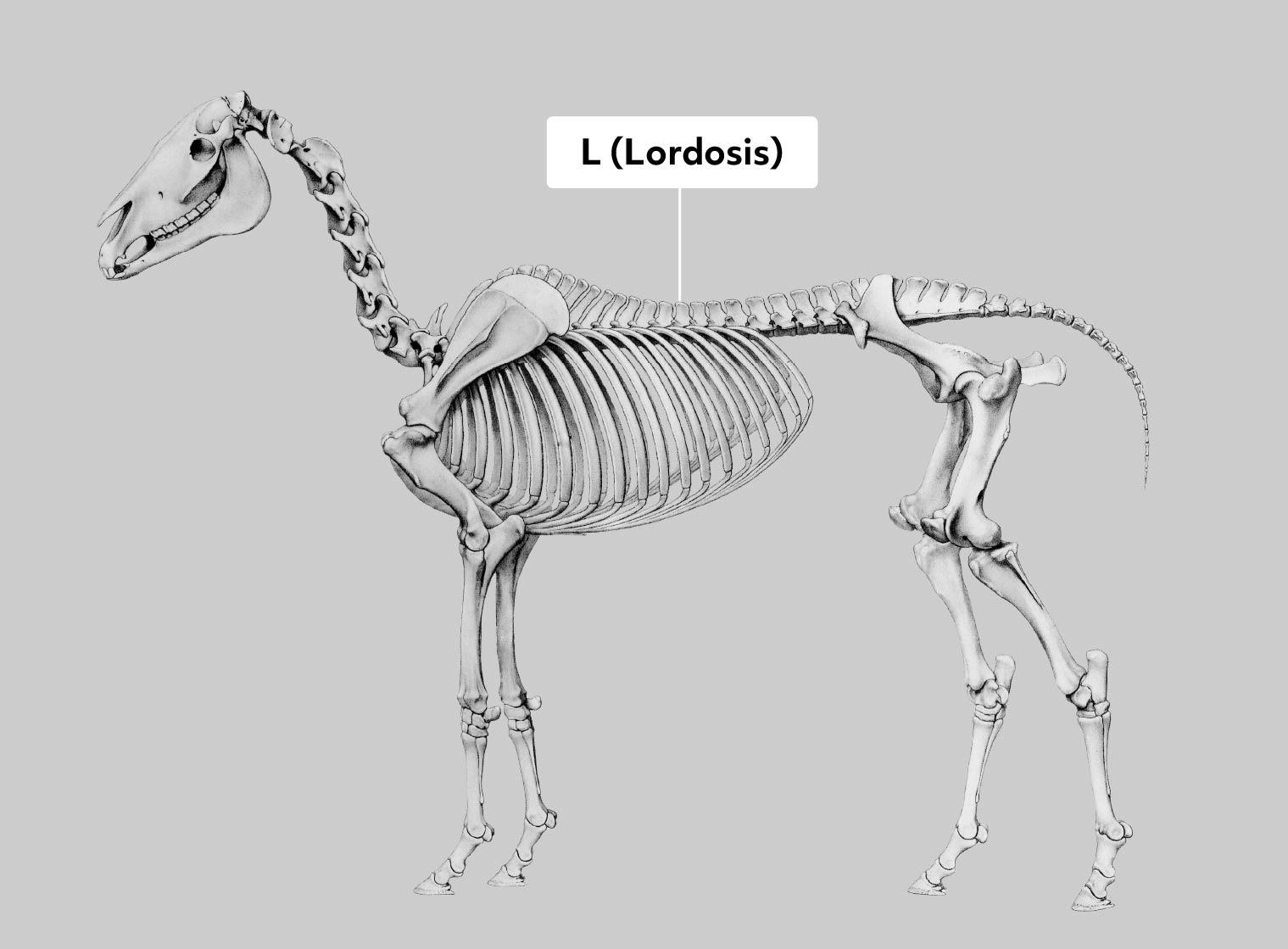Lordosis (L)
Gene or Region: ECA20: 41.5 Mb – 42.6 Mb
Reference Variant: C (L1), A (L2), C (L3), T (L4)
Mutant Variant: T (L1), G (L2), T (L3), G (L4)
Affected Breeds: American Saddlebred
Research Confidence: Moderate - Strong association in studied population, expanded studies support original findings
Explanation of Results: L1/L1, L2/L2, L3/L3, L4/L4 = eight Lordosis alleles detected; consecutive, likely affected L1/n, L2/n, L3/n, L4/n = four Lordosis alleles detected; consecutive, carrier L1/L1, L2/L2, n/n, n/n = four Lordosis alleles detected; non-consecutive, no known affect L1/L1, L2/n, n/n, n/n = three Lordosis alleles detected, no known affect n/L1, n/L2, n/n, n/n = two Lordosis alleles detected, no known affect n/n, n/L2, n/n, n/n = one Lordosis allele detected, no known affect
General Description for Lordosis
Lordosis, also known as swayback, is a curvature or dip in the spine that is often seen in older horses. However, in the American Saddlebred, this condition also affects younger horses. These animals do not appear to experience pain from their condition and are still able to be used under saddle. The genetics are likely complex and poorly understood.
One genome-wide study has been performed on Lordosis in the ASB. The four markers tested here (L1-L4) achieved the highest association, with 23/30 swayback horses homozygous for all four associated alleles, and an additional 7 cases were heterozygous for all. In comparison, there were only 44/287 controls homozygous for all four, and 135/287 heterozygous. Thus, horses that genotype L1: T/T L2: G/G L3: T/T L4: G/G are considered most at risk for the Lordosis phenotype. The researchers were unable to detect any candidate mutations in the three genes screened in closer detail. Further research is necessary to refine the association.
A horse must have at least one of each type of allele to be a carrier. If a horse has two of each mutant allele, then there is an 80% likelihood that he/she displays the Lordosis phenotype (they are swaybacked) and they will pass the carrier alleles to 100% of any offspring. Breeding to a non-carrier horse (even in one single region/allele) will prevent this type of Lordosis condition.
*This study/allele set has only been conducted in Saddlebred horses, the effects are yet unknown in other breeds.
References
Cook D et al., “Genetics of swayback in American Saddlebred horses.” (2010) Anim Genet. 41 Suppl 2: 64-71. PMID: 21070278
More Horse Health
"Warmblood" Fragile Foal Syndrome
"Warmblood" fragile foal syndrome (FFS) is a connective tissue disorder resulting in joint laxity and extremely thin skin that is only loosely connected to the body. The skin is easily torn, resulting in lacerations, hematomas, and seromas across the foal. Affected foals are euthanized shortly after birth.
Androgen Insensitivity Syndrome
Androgen Insensitivity Syndrome (AIS) is an X-linked disorder of sexual development resulting in a female horse with XY chromosomes. Horses with AIS exhibit stallion-like behavior such as agression toward other horses, Flehman response and vocalization toward cycling mares.
Cerebellar Abiotrophy
Cerebellar Abiotrophy (CA) is a degenerative neurological disorder, due to the death of neurons in the brain. Symptoms (head tremors, lack of coordination, wide stances, exaggerated gain, difficulty rising and startling easily), typically appear in foals between six weeks and four months of age.
Chronic Idiopathic Anhidrosis Risk
Chronic Idiopathic Anhidrosis Risk (CIA) is the inability to sweat in response to increased body temperature, (AKA "non-sweater"). This condition is dangerous and sometimes life-threatening for horses, who rely on sweating for 65-70% of their temperature regulation.
